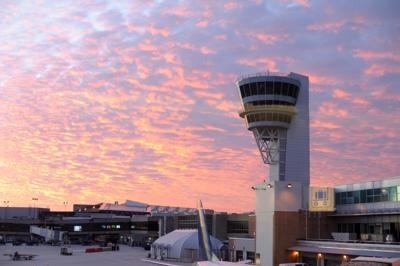Sat, Jul 01, 2023
Post-Pandemic Levels of Traffic Aren't Seeing Pre-Pandemic Staffing
A disconcerting report from the Department of Transportation's Office of the Inspector General reviewed a few ongoing problems in the ATC network, pointing to staffing challenges and an uncertain training pipeline as chief concerns.

The FAA made "limited efforts to ensure adequate controller staffing at critical air traffic control facilities," began the findings brief. Also worrisome, it added, was that "the Agency also has yet to implement a standardized scheduling tool to optimize controller scheduling practices at these facilities, and FAA officials disagree on how to account for trainees when determining staffing numbers." That lack of clear direction bears out in a few other ways, where locations stand shorthanded due to unclear and changing training timelines.
The report said that the FAA continues to face staffing challenges, as expected to some degree after a 2-year interruption in training and stable operations - but disconcertingly "lacks a plan to address them". The DoT report said that lack of planning "poses a risk to the continuity of air traffic operations", with spot checks revealing that 20 of 26 (77%) critical facilities are staffed below the FAA's minimum 85% threshold. And it's not just backwater, low traffic regions of the country. High-traffic centers like New York Terminal Radar Approach Control and Miami Tower sit at eyebrow-raising 54% and 66% staffing.
The COVID interruption continues to be felt throughout the ATC circuit, too, with years of training pauses stacking up to compound an already inconsistent flow of fresh blood into the industry. The training pause added another 2-year delay, which will "significantly increase controller certification times". Like the rest of the report, the FAA... doesn't really have a plan for that, either. The DoT said "The FAA will not know the full impact of the training suspension on certification times for several years because training outcomes vary widely, and it can take more than 3 years to train a controller. Due to these uncertain training outcomes, the FAA cannot ensure it will successfully train enough controllers in the short term."
The report issued a pair of recommendations to safeguard minimal staffing levels. First, the review of the models used to distribute certified professional controllers for ATC facilities, and update interim staffing levels as necessary. Secondly, the implementation of a new labor distribution system with features for timekeeping, overtime, and Controller-in-Charge tracking.
More News
Aero Linx: Transport Canada We are a federal institution, leading the Transport Canada portfolio and working with our partners. Transport Canada is responsible for transportation p>[...]
Gross Navigation Error (GNE) A lateral deviation from a cleared track, normally in excess of 25 Nautical Miles (NM). More stringent standards (for example, 10NM in some parts of th>[...]
From AirVenture 2017 (YouTube Edition): Flight-Proven Booster On Display At AirVenture… EAA AirVenture Oshkosh is known primarily as a celebration of experimental and amateu>[...]
Aircraft Parachute System (CAPS) Was Deployed About 293 Ft Above Ground Level, Which Was Too Low To Allow For Full Deployment Of The Parachute System Analysis: The day before the a>[...]
Also: 48th Annual Air Race Classic, Hot Air Balloon Fire, FAA v Banning 100LL, Complete Remote Pilot The news Piper PA-18 Super Cub owners have been waiting for has finally arrived>[...]
 ANN's Daily Aero-Linx (06.29.25)
ANN's Daily Aero-Linx (06.29.25) ANN's Daily Aero-Term (06.29.25): Gross Navigation Error (GNE)
ANN's Daily Aero-Term (06.29.25): Gross Navigation Error (GNE) Classic Aero-TV: Anticipating Futurespace - Blue Origin Visits Airventure 2017
Classic Aero-TV: Anticipating Futurespace - Blue Origin Visits Airventure 2017 NTSB Final Report: Cirrus SR22
NTSB Final Report: Cirrus SR22 Airborne Affordable Flyers 06.26.25: PA18 Upgrades, Delta Force, Rhinebeck
Airborne Affordable Flyers 06.26.25: PA18 Upgrades, Delta Force, Rhinebeck



